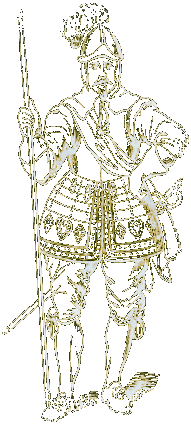Introduction to the Gunpowder Plot
Many of us celebrate bonfire night with fireworks on November the fifth each year. In the four centuries since the failed Gunpowder Plot occurred, many myths and misconceptions have arisen, and are still accepted by many as being true without question.
Background

In the forty years prior to the coronation of King James I in 1603, Elizabeth 1st was on the throne as the last Tudor Monarch. The Catholics in England had been relentlessly persecuted. To practice any religion other than Protestantism in England was against the law. All people over 16 years of age were required to attend protestant church services regularly, and to be married and have their children baptised into the religion. Anybody found carrying symbols of the Catholic religion, or taking part in Catholic mass, were fined or imprisoned or both. In this climate those who still followed the 'ancient faith' did so mostly in secrecy, or else paid the price. Catholic priests, if caught, were immediately imprisoned, often tortured, and if found guilty of treason, were executed. During this period many wealthy Catholic families celebrated mass in secret in their homes, hiding Catholic priests in specially constructed hiding places to protect them. Priests who travelled between houses used aliases to protect themselves and the families who hid them. Some people were prepared to endure this situation, practicing their religion in private and paying fines and suffering imprisonment when caught, however, a small number of militant younger men were not; in these times of repression for Catholics in England, they hatched many plots.

Conceived during 1604, the Gunpowder Plot was only one of various attempts to restore a Catholic monarch to the throne. While Guy Fawkes is the most famous name associated with the plot, he was in reality a hired mercenary; a gunpowder expert engaged to deal with the explosives. The leader of the plot, Robert Catesby, and his mother, lived less than fifteen miles from Coombe Abbey, at Ashby St. Ledgers. His fellow conspirators were also from wealthy Midlands families, and many of the conspirators were related or had strong family ties.
The plot had two threads; firstly, to remove the incumbent protestant monarch, and secondly, to install a 'puppet' Catholic monarch without creating a challenge to the throne. To achieve this, at the State Opening of Parliament on November 5th 1605, King James I (and almost certainly, his son and heir) was to be killed. On the following day, the next in line to the throne, the nine year old Princess Elizabeth, was to be kidnapped from her home at Coombe Abbey, and installed on the throne with a Catholic guardian. She was then to be re-educated in the Catholic religion, and at a later date married to a suitable member of a European Catholic royal family.
Whilst we celebrate the failure of the plot, it had far reaching consequences, both nationally and internationally.
Curriculum links:
- HISTORY: Why do we remember Guy Fawkes? How do we know about the Gunpowder plot? Develop historical interpretation and enquiry skills, by focusing on the events and the people involved. Look at the social, cultural and religious changes, which began in the Tudor period and which led up to the plot. Discover how, on a local level Coombe Abbey, the City of Coventry and many of the larger houses in the surrounding areas of Warwickshire were involved in events of the Gunpowder Plot. Discuss the significance of these events on a local, national and international scale.
- PSHE: Develop knowledge, skills and confidence. Listen to the evidence presented, and the lives of people involved in the plot, then take part in debates and discussions, share opinions and express views on the evidence presented. Discuss in light of recent events in London and across the world, in a historical context why things have not changed in 400 years.
- ENGLISH: Speaking and listening skills, Respond to the performance, by taking part in the group discussion, have the chance to discuss issues raised.

